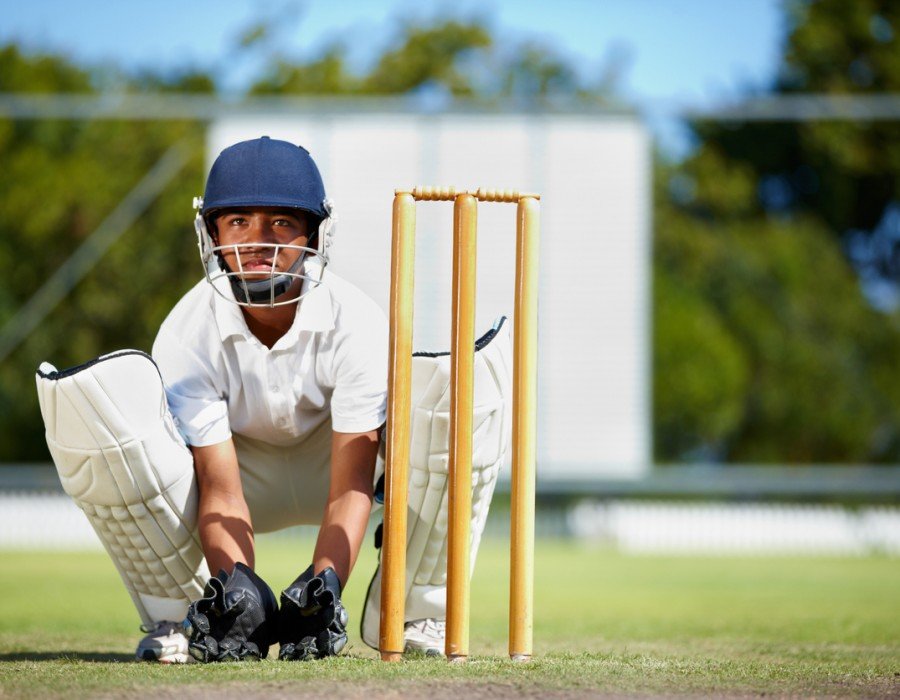Fitness and Performance
Cricket Fielders: The 5 best exercises for injury prevention

With a focus on fielders, North-East Lincolnshire-based physiotherapist Omkar Sawant presents his final blog in his series on cricket. Read what he has to say on strengthening and it’s principles, followed by his five recommended gym-based exercises for fielders and wicket keepers.
As explained in the first blog post, many studies have proved that fielders are also prone to injuries like any other cricketers. It is one inevitable part of cricket which both the batsmen and the bowlers have to do without fail. The modern game expects fielders to be excellent athletes, prejudge the game and be two steps ahead in anticipation of the flying ball.
With batsmen dominating the game, fielders’ task in hand is to make the job of a batsmen more difficult by hunting in packs and to outsmart the batsmen. Fielders (mainly the wicketkeeper’s) job is to keep the morale of the team, hence you can call them the motivational Guru’s of the cricket team.
Injuries which happen to the fielders may be contact or non-contact. Non-impact injuries which occur for fielders are mostly lower limb, mainly while running and chasing the ball. Some injuries can also occur while throwing, catching, diving and jumping in the cricket field. The ability to catch the ball, accelerate-decelerate for running and be focused are skills most fielders have to perform. We will be discussing in detail about the non-impact injuries in fielders in this article.
Most common injuries for fielders:
- Hamstring strain
- Thrower’s elbow
- Shoulder tendinitis
- Hand injuries
- Ankle sprain
Bounding
Like batsmen, fielders also need repeated, high-intensity effort requiring repeated accelerations-decelerations. Repeat sprint ability protocols, such as the 25-m shuttle, 30:15 interval fitness, and intermittent yo-yo test are probably important training tools for all cricketers, especially fielders.
This type of training may improve the ability of the lower limb musculature to handle the rapid acceleration-deceleration. Therefore, other than strength and conditioning, plyometric workouts help fielders to train better, prevents injuries and helps to prolong their careers. Bounding is a good workout for fielders as it replicates their task of rapidly chasing the ball.
Incorporation of jumping and throwing as discussed for the fast bowlers are other variation for bounding.
Stiff leg dead lifts
Fielders require their lower limbs to be stronger and more resilient, mainly in their posterior chain muscles. Wicket keepers also need good lower limb strength as they tend to squat a lot while fielding, causing increased chances of hamstring and lower back strain. What better exercise to target the posterior chain than stiff leg dead lifts!
These exercises specifically target the lower back muscles, mainly the glutes and the hamstring muscles, thereby preventing strains in the lower back, hip and knee area. It also helps in improving the flexibility in the hamstring muscles.
The other variant of this exercise is the dead lift which incorporates the knee joint as well. Using weight squats can help to bring the anterior chain in the picture as well.
Rotator cuff strengthening for your throwing arm
Almost all cricketers, including the wicketkeeper, need a strong throwing arm. Throwing is a prerequisite to fielding irrespective of your position. Strong shoulders and good activation around the shoulder muscles greatly helps to improve the power in the throw towards the stumps.
Rotator cuff strengthening is an important exercise for all the fielders as well as bowlers. This exercise can be easily performed using elastic bands, multigym machine or light dumbbell.
Wrist curls
Finger injuries are very common in many young fielders. It is so easy to misjudge a catch and end up with an injury. Wicket keepers are more prone to this. Therefore, wrist and grip strengthening is important for all fielders.
Wrist curls are basic finger and forearm strengthening exercises. These may be performed using dumbells, elastic bands and multigym machine. Influence of baseball training is also seen in cricket with the use of the rice bucket forearm workout which helps to develop grip and arm strength mainly for wicket keepers.
Calf strengthening
Given the amount of running required whilst fielding, it’s not surprising to see frequent ankle and calf strains in fielders. Rapid acceleration-deceleration, along with sliding on the ground to stop the ball, increases the risk of an ankle or calf strain. Older cricketers are also prone to achilles tendonitis secondary to training, running along with abnormal foot biomechanics.
Targeting the calf and ankle region specifically can help to prevent injuries in this region. Calf strengthening is the best exercise to tackle this. This can be achieved by doing weighted squats on a Smith machine on a stepper.
Using a weighted satchel can also help to load the calves in standing. This exercise targets the eccentric strength in the calf muscle. Calves can also be loaded on a leg press machine specifically with heel raises in weighted position.
Are you a budding cricketer suffering from frequent injuries? Do you feel you have certain issues of your training which need addressing? Why not consult a physiotherapist? We may be able to assess and evaluate your biomechanics, prescribe you an exercise programme to prolong your cricket career.